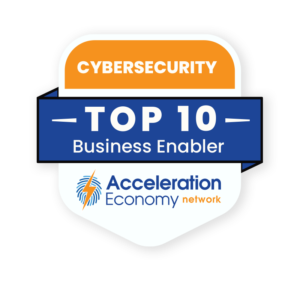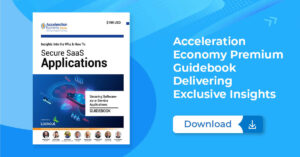In episode 36 of the Growth Swarm podcast, John Siefert, Bob Evans, Tony Uphoff, and Scott Vaughan discuss the best ways for leaders, in uncertain economic times, to balance the dual needs of running their day-to-day businesses in the near term with pursuing innovations that will drive growth in the future. To “parallel process” effectively, it all boils down to frameworks, communication, consistency, and leadership.
Highlights
01:01 — John introduces today’s topic, which is how to effectively manage your “business as usual” operations while simultaneously pursuing innovation projects such as pilot programs, new market entries, or globalization projects. Today’s discussion will focus on making these projects happen within the organization, specifically as a practitioner. Theoretical solutions may look great on paper, but in reality, it’s not that simple.
02:12 — Bob brings up a sports example, that games are often won or lost in the transition between offense and defense. A team that can efficiently manage the constant interplay between offense and defense is more nimble and has a better chance of winning. Tech companies that position themselves as helping their customers “do more with less” are going to “get the future they deserve.” Bob cites a recent analysis by Scott on why the idea of doing more with less should be dropped by businesses trying to navigate through uncertain economic times.
04:07 — John says these are strong words, but they are based on the reality of how business works. So, what are the next steps? How do business leaders build frameworks around the process of innovating while not stifling the existing part of your business?
05:28 — “You’re not going to save your way to greatness,” says Tony. “That’s kind of a nonsensical way of looking at the business.” The key question: Do you have a framework, system, or mental model for balancing resource allocation? You may have some existing businesses, or “cash cows,” that keep the lights on, but you need to start thinking about investing in new areas for future growth, along with measurable milestones against those investments. You also need to consider risk mitigation and have measurable milestones against that. It takes time and consideration to create a process, framework, and system. Having a framework and system puts things that are within your control in your grasp. You may not be able to control the global economy, but you can control specific variables in front of you.
09:21 — Cybersecurity is increasingly a business enabler, John says, and a concern that figures into managing parallel processes, since it touches on both existing businesses and new businesses, which are increasingly using SaaS applications in both single-cloud and multi-cloud environments. In this work environment, which is largely hybrid, where employees use various devices to access information through multiple clouds and hundreds of applications, setting a cybersecurity strategy is essential. This needs to be done while still running the entire business and managing all the different priorities. The approach to cybersecurity frameworks will vary depending on the size of the organization. Larger organizations may find it easier to manage multiple priorities, whereas mid-market or smaller organizations may struggle with the complexity of managing various priorities.
11:20 — Scott says it comes back to consistency and leadership. Whiplash is going to happen no matter what, and you’re likely to feel it more in a smaller company at times than in a larger company. That said, whiplash may also be harder in a larger company, but it may take a while to get down to the end of the tail for it to snap. That’s why this is a great time to clean up your systems or processes because you need that level of detail, insight, scrutiny, and data to put it all together. Then it becomes easier to communicate to your team, partners, and throughout the organization regarding which bets you’re making, where you need to tighten, and what you need to do to become more efficient (through, say, automation). Scott loves the term “parallel processing” because that’s the way businesses, big or small, should run in good and bad times alike.
14:20 — John points out a pitfall with parallel processing, which is “realizing that you can’t sacrifice progress for perfection.”
15:48 — Tony agrees that sometimes there is a tendency, in times such as these, for leaders to “oversharpen the knife” and “have another meeting on that,” which is where he goes back to frameworks, as these help you understand the size of the risk, measure your performance against that risk, and then have a clear risk mitigation plan.
18:16 — Bob cites a point Scott made in his analysis, which was about talent inside organizations, especially young talent. If they get the sense that an organization is on a “three-year lockdown,” they’ll “jump the hell out of there so fast.” Companies need to assess all of their pluses and minuses and get those young people into the places where they can have the biggest impact on the company, the talent, and their shared future together. “Heads up,” in Bob’s opinion, means don’t believe all the conventional wisdom and don’t try to take a playbook from 1985 and apply it here, because it doesn’t match up. We’re in a very different time.
19:04 — Scott says that even comparing 2008 or 2009 to today’s scenario is off the mark because things have changed significantly. We’re running our businesses differently, customer expectations have changed, and our high-potential employees have different needs. We can’t rely on the old playbook. While there are some fundamentals and core leverage that apply to any business, it’s important to note that the current situation is volatile and uneven. Sectors such as travel, hospitality, and even some retail and tech, are outperforming expectations, while other industries are languishing. So blanket statements don’t help. Today you need a systematic approach, communications, and data. And there are so many more tools in the acceleration economy to do that. So let’s use them.
Which companies are the most important vendors in cybersecurity? Click here to see the Acceleration Economy Top 10 Cybersecurity Shortlist, as selected by our expert team of practitioner analysts.
20:16 — Bob brings up two “old companies,” Oracle and SAP, because they are two of today’s fastest-growing companies in the Cloud Wars Top 10. Three years ago, Oracle didn’t think it could win in the cloud infrastructure business, but the company went after it and is now leading. Meanwhile, at the onset of the pandemic, SAP had some turnover at the top of the company and was unable to offer revenue guidance for the future, as well as a massive set of on-premise customers. Some people might have said, “You have to protect them, don’t take this cloud risk.” But that’s not what they did and now they have a booming cloud business. None of this would have happened had they taken the ostrich view of things and the silly notion of just doing one thing at a time until the crisis passes.
22:24 — John says there’s another term that he’s heard a lot lately that resonates particularly with Bob’s comments on Oracle and SAP: “We’ve got to go back to basics.” He thinks the term is equally useless. “What Oracle and SAP did in that environment was redefine what the basics actually meant for the organization, reprioritized, and then created a growth opportunity in front of them,” he says. “So don’t go back to basics. It’s our responsibility as leaders, as practitioners, to redefine what those basics mean in the acceleration economy.”
[This episode of Growth Swarm is brought to you by Lookout, which is an Acceleration Economy Top 10 Cybersecurity company. Read more about Lookout here.]
Want more tech insights for the top execs? Visit the Leadership channel:











